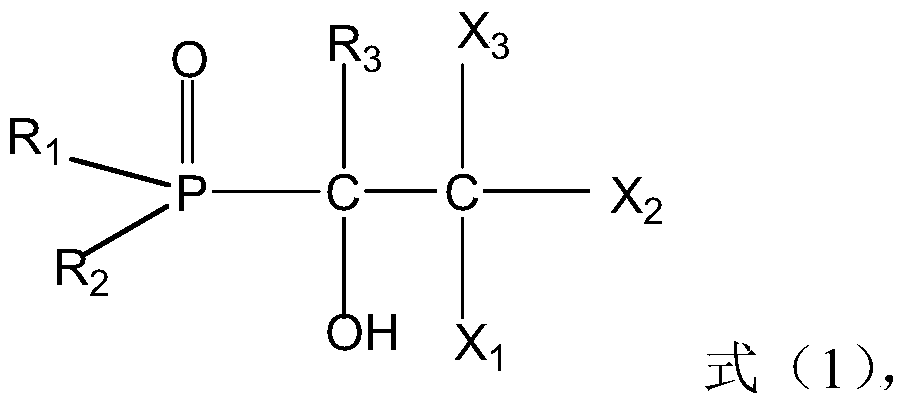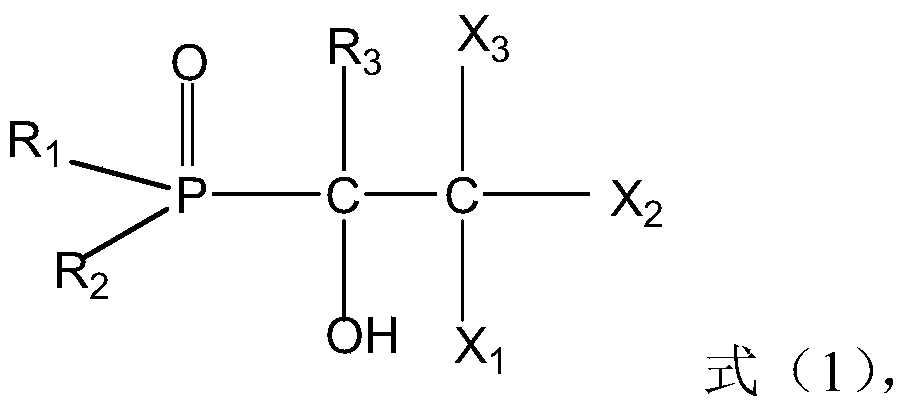A kind of biomass-based slow-release pesticide and preparation method thereof
A slow-release pesticide and biomass technology, applied in botany equipment and methods, biocides, animal repellants, etc., can solve the problems of low pesticide loading and low chemical reactivity, and achieve high poisoning efficiency, Increased added value, increased utilization and the effect of added value
- Summary
- Abstract
- Description
- Claims
- Application Information
AI Technical Summary
Problems solved by technology
Method used
Image
Examples
preparation example Construction
[0019] The invention provides a preparation method of a biomass-based slow-release pesticide, the method comprising the following steps:
[0020] (1) performing the first contact reaction with the biomass raw material, the fatty alcohol and the first acidic catalyst, and then separating the product obtained in the first contact reaction to obtain light oil and alcoholysis residue;
[0021] (2) at a pH value of 7-9 and 30-50°C, carry out the second step in an organic solvent with the alcoholysis residue, the pesticide technical compound of the structure shown in formula (1) and an optional cross-linking agent. Three-contact reaction for 0.5-1 hour;
[0022] Wherein, the fatty alcohol is an aliphatic saturated monohydric alcohol with 4-13 carbon atoms; the crosslinking agent is one of carbonyl chloride, thionyl chloride, isocyanate, maleic anhydride and phthalic anhydride or more,
[0023]
[0024] In formula (1), R 1 and R 2 Each independently is a C1-C3 alkoxy group, R ...
Embodiment 1
[0063]This example is used for the biomass-based slow-release pesticide and its preparation method provided by the present invention.
[0064] (1) add the n-octanol solvent of 300 weight parts and the sulfuric acid (98 weight % vitriol oil) of 12 weight parts in the airtight 2L Japanese Taiatsu company TAS-2 type stainless steel reaction kettle that stirrer and temperature controller are housed, After sealing, energize and heat, and add 100 parts by weight of poplar wood powder while stirring (the poplar wood collection site is Taiyang Village, Heping Township, Yuexi County, Anhui Province, through a 0.45mm aperture screen, the water content is 7.82% by weight, and the hydroxyl value is 190mgKOH / g ), heated to 130°C at a heating rate of 2-3°C / min, after reacting for 60min, rapidly cooled to room temperature, and then extracted and separated the obtained product by 300 parts by weight of n-hexane solvent, and removed n-hexane by rotary evaporation to obtain Light oil (n-hexane ...
Embodiment 2
[0071] This example is used to illustrate the biomass-based slow-release pesticide and its preparation method provided by the present invention.
[0072] Adopt the same method as Example 1 to prepare biomass-based slow-release pesticides, the difference is that step (2) is not carried out, but in 300 parts by weight of acetone, the alcohol obtained by 100 parts by weight of step (1) solution residue, 50 parts by weight of trichlorfon, and 3 parts by weight of diphenylmethane diisocyanate were mixed, and the pH was adjusted to 7 with 30% by weight of aqueous sodium hydroxide solution, and the reaction was stirred at 50°C for 60 minutes, and the reacted The product was distilled under reduced pressure to remove the acetone solvent, and then 300 parts by weight of absolute ethanol was added to the resulting mixture to stir and dissolve the unreacted pesticide former drug trichlorfon, and then the resulting mixture was subjected to vacuum filtration to remove the ethanol solution, ...
PUM
 Login to View More
Login to View More Abstract
Description
Claims
Application Information
 Login to View More
Login to View More - R&D
- Intellectual Property
- Life Sciences
- Materials
- Tech Scout
- Unparalleled Data Quality
- Higher Quality Content
- 60% Fewer Hallucinations
Browse by: Latest US Patents, China's latest patents, Technical Efficacy Thesaurus, Application Domain, Technology Topic, Popular Technical Reports.
© 2025 PatSnap. All rights reserved.Legal|Privacy policy|Modern Slavery Act Transparency Statement|Sitemap|About US| Contact US: help@patsnap.com



